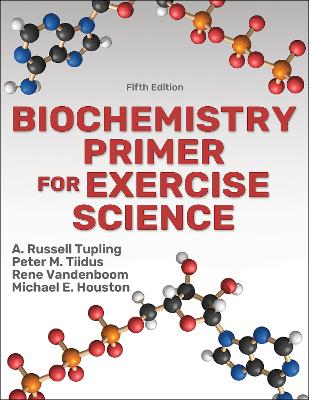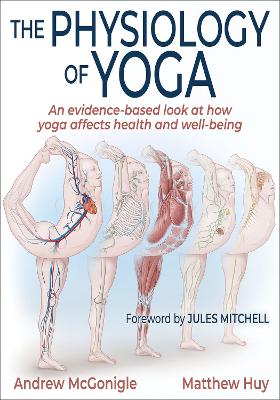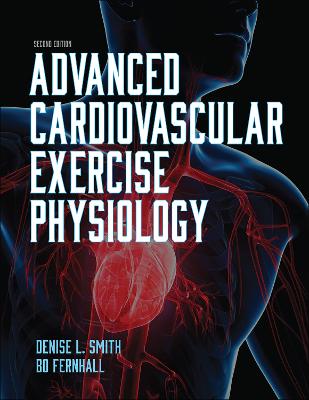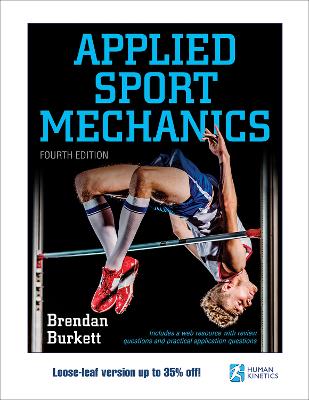Physiology of Exercise and Healthy Aging
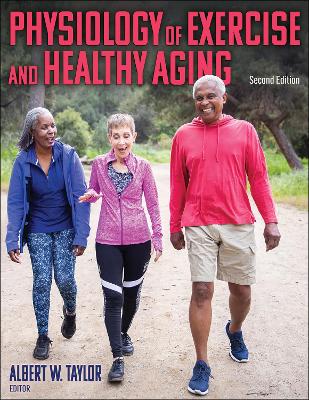 -15%
portes grátis
-15%
portes grátis
Physiology of Exercise and Healthy Aging
Taylor, Albert W.
Human Kinetics Publishers
11/2021
408
Mole
Inglês
9781492597254
15 a 20 dias
1089
Descrição não disponível.
Introduction
Physical and Cognitive Changes With Aging
The Process of Aging
Aging and Homeostatic Processes
Aging Demographics
Theories of Aging
Physical Activity and Aging
Programming Recommendations
Summary
Part I. Physiological Systems, Age-Related Changes, and the Role of Physical Activity
Chapter 1. Cardiopulmonary System
Kevin Shoemaker and Patrice Brassard
Structure and Function
Age-Related Changes
Cardiovascular Disease and Age
Summary
Chapter 2. Musculoskeletal System
Kevin Milne, Matthew Krause, and Albert W. Taylor
Muscle Morphology
Age-Related Changes in Biochemical Properties
Skeletal Muscle, Aging, and Training
Age-Related Diseases Limiting Exercise
Programming Recommendations
Summary
Chapter 3. Nervous System
Pierre M.L. Deprez
Overview of the Nervous System
Age-Related Diseases
Interventions in Age-Related Changes in the Nervous System
Summary
Chapter 4. Sensory Systems
Pierre M.L. Deprez
Hearing
Vision
Touch
Smell
Taste
Programming Recommendations
Summary
Part II. Related Common Diseases and Maladies, and the Role of Physical Activity
Chapter 5. Diet and Diabetes Management
Sarah O'Connor and Paul Poirier
Introduction
Types of Diabetes
Complications Associated With Diabetes
Basic Nutritional Principles in the Management of Diabetes
Prevention of Diabetes
Diabetes and Physical Activity
Dietary Guidelines for Diabetes
Beneficial Dietary Patterns for Diabetes
Dietary Considerations for Diabetes During Pregnancy
Diabetes Management Among Older Adults
Clinical Approaches and Practical Tools
Summary
Chapter 6. Bone Health, Osteoporosis, and Exercise
Darien Lazowski-Fraher
Bone Function and Structure
Osteoporosis
Nutrition for Bone Health
Physical Activity for Bone Health
Programming Recommendations
Summary
Chapter 7. Osteoarthritis, Aging, and Physical Activity
Jane Thornton and Gilbert Moatshe
Structure and Function of the Joints
Osteoarthritis
Treatment
Programming Recommendations
Risks and Precautions for People With OA
Summary
Chapter 8. Aging, the Pelvic Floor, Incontinence, and Exercise
Linda McLean and Carolyn Vandyken
Introduction
Continence Control and Types of Urinary Incontinence
Anatomy and Function of the Pelvic Floor
Evidence for Age-Related Changes in the Pelvic Floor as They Relate to Continence Function
Evidence-Based Strategies for the Maintenance of a Healthy Pelvic Floor With Aging
Pelvic Floor Muscle Training Exercise Prescription
A Final Word
Summary
Chapter 9. Mental Health, Aging, and Physical Activity
Andrea Lazosky
Prevalence of Mental Health Issues With Aging
Pathophysiology of Depression With Aging
Psychosocial Theories of Aging
The Role of Physical Activity on Mental Health With Aging
Forms of Physical Activity
Summary
Chapter 10. Sex, Aging, and Physical Activity
Lee Smith and Igor Grabovac
Prevalence of Sexual Activity in Aging
Biopsychosocial Model of Changes Related to Sexuality in Later Life
Prevalence of Sexual Dysfunction in Older Adults
Physical and Mental Health Benefits of a Frequent and Trouble-Free Sex Life in Later Life
The Role of Physical Activity on Sexuality in Older Adults
Summary
Part III. Physiologic Adaptability to Training and Physical Activity
Chapter 11. Balance Control and Prevention of Falls in Older Adults
Grant Handrigan
The Biomechanics of Balance Control
Fall Risk Factors
Fall Risk Prevention
Summary
Chapter 12. A Functional Approach to Exercise
Denise M. Connelly
Principles of Exercise
Exercise and Cognitive Impairment
Exercise Prescription
Exercise Programming
Programming Recommendations
Summary
Chapter 13. Training for Aerobic and Anaerobic Fitness
Edward Todd Taylor and Tom Overend
Brief Review of Exercise Physiology
Benefits of Aerobic and Anaerobic Fitness
Research on the Positive Effects of Aerobic Exercise and Training
Research on the Positive Effects of Anaerobic Exercise and Training
Programming Recommendations
Recommendations for "Frail" Elderly
Aerobic and Anaerobic Exercise Integration
Summary
Chapter 14. Training for Muscle Performance for Older Adults
Michelle Cardoso and Chantale R. Brun
Muscle Performance and Aging
Muscle Mass, Strength, and Function
Summary
Chapter 15. Exercise Adherence and Safety Measures
James Sawchuk and Albert W. Taylor
Exercise Adherence
Safety
Programming Recommendations
Summary
Chapter 16. Clean Sport for Masters Athletes
Taryn-Lise Taylor and Sean Mindra
Masters Athletes
Hormones
Anabolic Steroids
Analgesics and Anti-Inflammatories
Hypertension Medications
Erythropoietin
Dietary Supplementation and Ergogenic Aid
Summary
Appendix A: Web Resources
Appendix B: Forms
Physical and Cognitive Changes With Aging
The Process of Aging
Aging and Homeostatic Processes
Aging Demographics
Theories of Aging
Physical Activity and Aging
Programming Recommendations
Summary
Part I. Physiological Systems, Age-Related Changes, and the Role of Physical Activity
Chapter 1. Cardiopulmonary System
Kevin Shoemaker and Patrice Brassard
Structure and Function
Age-Related Changes
Cardiovascular Disease and Age
Summary
Chapter 2. Musculoskeletal System
Kevin Milne, Matthew Krause, and Albert W. Taylor
Muscle Morphology
Age-Related Changes in Biochemical Properties
Skeletal Muscle, Aging, and Training
Age-Related Diseases Limiting Exercise
Programming Recommendations
Summary
Chapter 3. Nervous System
Pierre M.L. Deprez
Overview of the Nervous System
Age-Related Diseases
Interventions in Age-Related Changes in the Nervous System
Summary
Chapter 4. Sensory Systems
Pierre M.L. Deprez
Hearing
Vision
Touch
Smell
Taste
Programming Recommendations
Summary
Part II. Related Common Diseases and Maladies, and the Role of Physical Activity
Chapter 5. Diet and Diabetes Management
Sarah O'Connor and Paul Poirier
Introduction
Types of Diabetes
Complications Associated With Diabetes
Basic Nutritional Principles in the Management of Diabetes
Prevention of Diabetes
Diabetes and Physical Activity
Dietary Guidelines for Diabetes
Beneficial Dietary Patterns for Diabetes
Dietary Considerations for Diabetes During Pregnancy
Diabetes Management Among Older Adults
Clinical Approaches and Practical Tools
Summary
Chapter 6. Bone Health, Osteoporosis, and Exercise
Darien Lazowski-Fraher
Bone Function and Structure
Osteoporosis
Nutrition for Bone Health
Physical Activity for Bone Health
Programming Recommendations
Summary
Chapter 7. Osteoarthritis, Aging, and Physical Activity
Jane Thornton and Gilbert Moatshe
Structure and Function of the Joints
Osteoarthritis
Treatment
Programming Recommendations
Risks and Precautions for People With OA
Summary
Chapter 8. Aging, the Pelvic Floor, Incontinence, and Exercise
Linda McLean and Carolyn Vandyken
Introduction
Continence Control and Types of Urinary Incontinence
Anatomy and Function of the Pelvic Floor
Evidence for Age-Related Changes in the Pelvic Floor as They Relate to Continence Function
Evidence-Based Strategies for the Maintenance of a Healthy Pelvic Floor With Aging
Pelvic Floor Muscle Training Exercise Prescription
A Final Word
Summary
Chapter 9. Mental Health, Aging, and Physical Activity
Andrea Lazosky
Prevalence of Mental Health Issues With Aging
Pathophysiology of Depression With Aging
Psychosocial Theories of Aging
The Role of Physical Activity on Mental Health With Aging
Forms of Physical Activity
Summary
Chapter 10. Sex, Aging, and Physical Activity
Lee Smith and Igor Grabovac
Prevalence of Sexual Activity in Aging
Biopsychosocial Model of Changes Related to Sexuality in Later Life
Prevalence of Sexual Dysfunction in Older Adults
Physical and Mental Health Benefits of a Frequent and Trouble-Free Sex Life in Later Life
The Role of Physical Activity on Sexuality in Older Adults
Summary
Part III. Physiologic Adaptability to Training and Physical Activity
Chapter 11. Balance Control and Prevention of Falls in Older Adults
Grant Handrigan
The Biomechanics of Balance Control
Fall Risk Factors
Fall Risk Prevention
Summary
Chapter 12. A Functional Approach to Exercise
Denise M. Connelly
Principles of Exercise
Exercise and Cognitive Impairment
Exercise Prescription
Exercise Programming
Programming Recommendations
Summary
Chapter 13. Training for Aerobic and Anaerobic Fitness
Edward Todd Taylor and Tom Overend
Brief Review of Exercise Physiology
Benefits of Aerobic and Anaerobic Fitness
Research on the Positive Effects of Aerobic Exercise and Training
Research on the Positive Effects of Anaerobic Exercise and Training
Programming Recommendations
Recommendations for "Frail" Elderly
Aerobic and Anaerobic Exercise Integration
Summary
Chapter 14. Training for Muscle Performance for Older Adults
Michelle Cardoso and Chantale R. Brun
Muscle Performance and Aging
Muscle Mass, Strength, and Function
Summary
Chapter 15. Exercise Adherence and Safety Measures
James Sawchuk and Albert W. Taylor
Exercise Adherence
Safety
Programming Recommendations
Summary
Chapter 16. Clean Sport for Masters Athletes
Taryn-Lise Taylor and Sean Mindra
Masters Athletes
Hormones
Anabolic Steroids
Analgesics and Anti-Inflammatories
Hypertension Medications
Erythropoietin
Dietary Supplementation and Ergogenic Aid
Summary
Appendix A: Web Resources
Appendix B: Forms
Este título pertence ao(s) assunto(s) indicados(s). Para ver outros títulos clique no assunto desejado.
Physiology; aging; exercise; physical activity; healthy aging; older adults; frail elders; master athletes; quality of life
Introduction
Physical and Cognitive Changes With Aging
The Process of Aging
Aging and Homeostatic Processes
Aging Demographics
Theories of Aging
Physical Activity and Aging
Programming Recommendations
Summary
Part I. Physiological Systems, Age-Related Changes, and the Role of Physical Activity
Chapter 1. Cardiopulmonary System
Kevin Shoemaker and Patrice Brassard
Structure and Function
Age-Related Changes
Cardiovascular Disease and Age
Summary
Chapter 2. Musculoskeletal System
Kevin Milne, Matthew Krause, and Albert W. Taylor
Muscle Morphology
Age-Related Changes in Biochemical Properties
Skeletal Muscle, Aging, and Training
Age-Related Diseases Limiting Exercise
Programming Recommendations
Summary
Chapter 3. Nervous System
Pierre M.L. Deprez
Overview of the Nervous System
Age-Related Diseases
Interventions in Age-Related Changes in the Nervous System
Summary
Chapter 4. Sensory Systems
Pierre M.L. Deprez
Hearing
Vision
Touch
Smell
Taste
Programming Recommendations
Summary
Part II. Related Common Diseases and Maladies, and the Role of Physical Activity
Chapter 5. Diet and Diabetes Management
Sarah O'Connor and Paul Poirier
Introduction
Types of Diabetes
Complications Associated With Diabetes
Basic Nutritional Principles in the Management of Diabetes
Prevention of Diabetes
Diabetes and Physical Activity
Dietary Guidelines for Diabetes
Beneficial Dietary Patterns for Diabetes
Dietary Considerations for Diabetes During Pregnancy
Diabetes Management Among Older Adults
Clinical Approaches and Practical Tools
Summary
Chapter 6. Bone Health, Osteoporosis, and Exercise
Darien Lazowski-Fraher
Bone Function and Structure
Osteoporosis
Nutrition for Bone Health
Physical Activity for Bone Health
Programming Recommendations
Summary
Chapter 7. Osteoarthritis, Aging, and Physical Activity
Jane Thornton and Gilbert Moatshe
Structure and Function of the Joints
Osteoarthritis
Treatment
Programming Recommendations
Risks and Precautions for People With OA
Summary
Chapter 8. Aging, the Pelvic Floor, Incontinence, and Exercise
Linda McLean and Carolyn Vandyken
Introduction
Continence Control and Types of Urinary Incontinence
Anatomy and Function of the Pelvic Floor
Evidence for Age-Related Changes in the Pelvic Floor as They Relate to Continence Function
Evidence-Based Strategies for the Maintenance of a Healthy Pelvic Floor With Aging
Pelvic Floor Muscle Training Exercise Prescription
A Final Word
Summary
Chapter 9. Mental Health, Aging, and Physical Activity
Andrea Lazosky
Prevalence of Mental Health Issues With Aging
Pathophysiology of Depression With Aging
Psychosocial Theories of Aging
The Role of Physical Activity on Mental Health With Aging
Forms of Physical Activity
Summary
Chapter 10. Sex, Aging, and Physical Activity
Lee Smith and Igor Grabovac
Prevalence of Sexual Activity in Aging
Biopsychosocial Model of Changes Related to Sexuality in Later Life
Prevalence of Sexual Dysfunction in Older Adults
Physical and Mental Health Benefits of a Frequent and Trouble-Free Sex Life in Later Life
The Role of Physical Activity on Sexuality in Older Adults
Summary
Part III. Physiologic Adaptability to Training and Physical Activity
Chapter 11. Balance Control and Prevention of Falls in Older Adults
Grant Handrigan
The Biomechanics of Balance Control
Fall Risk Factors
Fall Risk Prevention
Summary
Chapter 12. A Functional Approach to Exercise
Denise M. Connelly
Principles of Exercise
Exercise and Cognitive Impairment
Exercise Prescription
Exercise Programming
Programming Recommendations
Summary
Chapter 13. Training for Aerobic and Anaerobic Fitness
Edward Todd Taylor and Tom Overend
Brief Review of Exercise Physiology
Benefits of Aerobic and Anaerobic Fitness
Research on the Positive Effects of Aerobic Exercise and Training
Research on the Positive Effects of Anaerobic Exercise and Training
Programming Recommendations
Recommendations for "Frail" Elderly
Aerobic and Anaerobic Exercise Integration
Summary
Chapter 14. Training for Muscle Performance for Older Adults
Michelle Cardoso and Chantale R. Brun
Muscle Performance and Aging
Muscle Mass, Strength, and Function
Summary
Chapter 15. Exercise Adherence and Safety Measures
James Sawchuk and Albert W. Taylor
Exercise Adherence
Safety
Programming Recommendations
Summary
Chapter 16. Clean Sport for Masters Athletes
Taryn-Lise Taylor and Sean Mindra
Masters Athletes
Hormones
Anabolic Steroids
Analgesics and Anti-Inflammatories
Hypertension Medications
Erythropoietin
Dietary Supplementation and Ergogenic Aid
Summary
Appendix A: Web Resources
Appendix B: Forms
Physical and Cognitive Changes With Aging
The Process of Aging
Aging and Homeostatic Processes
Aging Demographics
Theories of Aging
Physical Activity and Aging
Programming Recommendations
Summary
Part I. Physiological Systems, Age-Related Changes, and the Role of Physical Activity
Chapter 1. Cardiopulmonary System
Kevin Shoemaker and Patrice Brassard
Structure and Function
Age-Related Changes
Cardiovascular Disease and Age
Summary
Chapter 2. Musculoskeletal System
Kevin Milne, Matthew Krause, and Albert W. Taylor
Muscle Morphology
Age-Related Changes in Biochemical Properties
Skeletal Muscle, Aging, and Training
Age-Related Diseases Limiting Exercise
Programming Recommendations
Summary
Chapter 3. Nervous System
Pierre M.L. Deprez
Overview of the Nervous System
Age-Related Diseases
Interventions in Age-Related Changes in the Nervous System
Summary
Chapter 4. Sensory Systems
Pierre M.L. Deprez
Hearing
Vision
Touch
Smell
Taste
Programming Recommendations
Summary
Part II. Related Common Diseases and Maladies, and the Role of Physical Activity
Chapter 5. Diet and Diabetes Management
Sarah O'Connor and Paul Poirier
Introduction
Types of Diabetes
Complications Associated With Diabetes
Basic Nutritional Principles in the Management of Diabetes
Prevention of Diabetes
Diabetes and Physical Activity
Dietary Guidelines for Diabetes
Beneficial Dietary Patterns for Diabetes
Dietary Considerations for Diabetes During Pregnancy
Diabetes Management Among Older Adults
Clinical Approaches and Practical Tools
Summary
Chapter 6. Bone Health, Osteoporosis, and Exercise
Darien Lazowski-Fraher
Bone Function and Structure
Osteoporosis
Nutrition for Bone Health
Physical Activity for Bone Health
Programming Recommendations
Summary
Chapter 7. Osteoarthritis, Aging, and Physical Activity
Jane Thornton and Gilbert Moatshe
Structure and Function of the Joints
Osteoarthritis
Treatment
Programming Recommendations
Risks and Precautions for People With OA
Summary
Chapter 8. Aging, the Pelvic Floor, Incontinence, and Exercise
Linda McLean and Carolyn Vandyken
Introduction
Continence Control and Types of Urinary Incontinence
Anatomy and Function of the Pelvic Floor
Evidence for Age-Related Changes in the Pelvic Floor as They Relate to Continence Function
Evidence-Based Strategies for the Maintenance of a Healthy Pelvic Floor With Aging
Pelvic Floor Muscle Training Exercise Prescription
A Final Word
Summary
Chapter 9. Mental Health, Aging, and Physical Activity
Andrea Lazosky
Prevalence of Mental Health Issues With Aging
Pathophysiology of Depression With Aging
Psychosocial Theories of Aging
The Role of Physical Activity on Mental Health With Aging
Forms of Physical Activity
Summary
Chapter 10. Sex, Aging, and Physical Activity
Lee Smith and Igor Grabovac
Prevalence of Sexual Activity in Aging
Biopsychosocial Model of Changes Related to Sexuality in Later Life
Prevalence of Sexual Dysfunction in Older Adults
Physical and Mental Health Benefits of a Frequent and Trouble-Free Sex Life in Later Life
The Role of Physical Activity on Sexuality in Older Adults
Summary
Part III. Physiologic Adaptability to Training and Physical Activity
Chapter 11. Balance Control and Prevention of Falls in Older Adults
Grant Handrigan
The Biomechanics of Balance Control
Fall Risk Factors
Fall Risk Prevention
Summary
Chapter 12. A Functional Approach to Exercise
Denise M. Connelly
Principles of Exercise
Exercise and Cognitive Impairment
Exercise Prescription
Exercise Programming
Programming Recommendations
Summary
Chapter 13. Training for Aerobic and Anaerobic Fitness
Edward Todd Taylor and Tom Overend
Brief Review of Exercise Physiology
Benefits of Aerobic and Anaerobic Fitness
Research on the Positive Effects of Aerobic Exercise and Training
Research on the Positive Effects of Anaerobic Exercise and Training
Programming Recommendations
Recommendations for "Frail" Elderly
Aerobic and Anaerobic Exercise Integration
Summary
Chapter 14. Training for Muscle Performance for Older Adults
Michelle Cardoso and Chantale R. Brun
Muscle Performance and Aging
Muscle Mass, Strength, and Function
Summary
Chapter 15. Exercise Adherence and Safety Measures
James Sawchuk and Albert W. Taylor
Exercise Adherence
Safety
Programming Recommendations
Summary
Chapter 16. Clean Sport for Masters Athletes
Taryn-Lise Taylor and Sean Mindra
Masters Athletes
Hormones
Anabolic Steroids
Analgesics and Anti-Inflammatories
Hypertension Medications
Erythropoietin
Dietary Supplementation and Ergogenic Aid
Summary
Appendix A: Web Resources
Appendix B: Forms
Este título pertence ao(s) assunto(s) indicados(s). Para ver outros títulos clique no assunto desejado.

